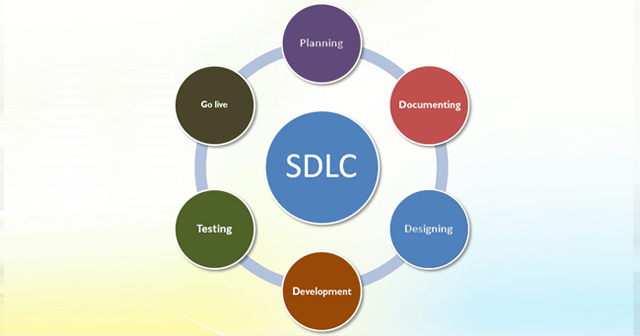Today, software development has expanded rapidly. It has become a challenging and an interesting process. The development process travels through successive phases in an orderly way. Choosing the correct software development process becomes a difficult task for many enterprises. Adding value to your organization has become imperative in the ever progressing world. For the same purpose, an organization should be aware of choosing the right process.
Let’s see what exactly the software development life cycle is! For organizations to achieve changes, it becomes essential for creating and changing of the software system and the methodologies. Planning, control and execution together combine to form SDLC.
Let us analyze the stages of software development life cycle and make you choose the best software development process. We will go through the unique 6 step of the SDLC process to allow businesses achieve profit from the services.
Examining the software planning and requirements: The first stage is the most crucial and fundamental stage in the life cycle of Software development. It’s probably a myth among the clients that they know the software’s unique task. The software engineers lack skills and expertise. As a result, they fall short of recognizing what exactly are the contradictory requirements of an enterprise.
The expert’s team visits the client’s site for the development process and examines the unique requirements of the business. The senior members of the team plan for the requirements of quality assurance and analyze the risks involved in the project. This stage identifies the core problem areas and proposes its effective solutions.
Documentation of the software requirements: The next step after examining the software requirements is the documentation stage. The documents are approved by the consumers and the market analysts. All the specifications regarding the product’s requirements are present in these documents. Such documents allow smooth designing and development during the Software Development Process. They have specific suggestions for the improvement of the client’s system. Documenting the internal design of the software is essential for future maintenance and enhancement.
Designing the software infrastructure: Based on the documented requirements, the best infrastructure of the software is designed. All the stakeholders review various models for the software architecture. The final design gets selected on the basis of a number of parameters such as risk assessment, software durability, design modularity, planned cost and time limits. The internal design of the decided infrastructure is well-defined with specific details. R & D successfully frames a cost-effective system to fulfill the consumer’s needs with efficiency like never before.
Development of the software: Yes, now your software is all ready to be built. The real development starts in the third stage. Based on the design documents, the programming code is produced so that it becomes machine-readable. In order to form the code, different tools are employed such as interpreters, compilers and debuggers. Based on the kind of software being built, the programming languages such as Java, Pascal, C, C++ and PHP are selected.
Testing the Software: After the code generation, it’s the testing turn! Various methodologies exist for testing for identification of bugs. In this stage, software flaws are reported, tracked, rectified and retested until the software reaches the desired quality level. The available customized testing tools for operations’ development deliver great efficiency in the software. The feedback during testing allows the required modifications in the system.
Go live: Once the testing process is complete, your software is ready to go live in the market. At times, software deployment happens in stages as per the enterprises’ business strategy. In a limited segment, the software gets released first, to be tested in the real business world. The feedback from the market allows the enhancement of the software’s weak areas. If there are no flaws in the product, then it goes live. After the software goes live in the market, the maintenance process starts. There is a building block approach for an easy maintenance. The systems are made flexible to enable adaptation. If the different components of the software are independent, the applications become much more predictable. Interdependence results in rigidity and an obsolete system hamper the company’s growth.
Conclusion
To conclude, you need to keep in mind the 6-tier process in order to choose the best software development process that works. Today, the tools for identifying requirements, static and dynamic analysis and testing of the software minimize the need for resources. It successfully lowers the costs and eliminates the possibility of risks. As a result, you get software that is capable of performing the required work and attain certification early on an affordable budget.
Firms like TSP LLC can offer your organization end-to-end custom software development service to jump start your project. TSP LLC can help in conceptualizing your idea and proving the concepts to your investors. It can also help you to expand your in-house team to fulfill the expectations of time and budget. It keeps your organizations ahead in the technology battle.


